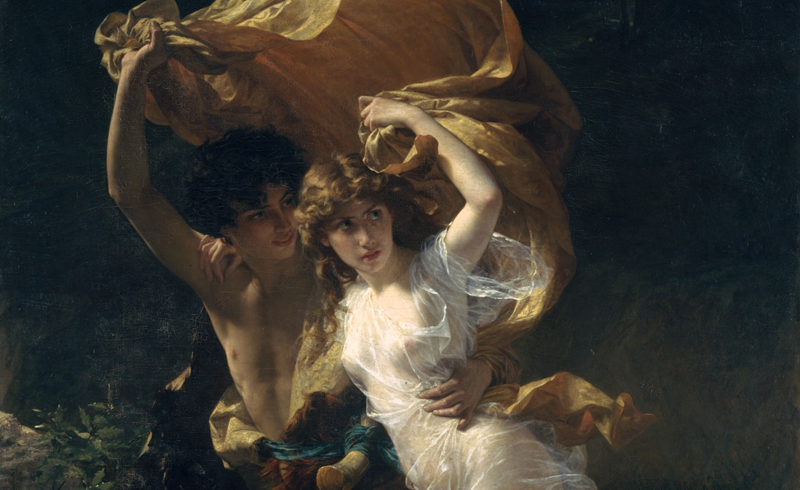
September 20, 2019
Dangerous Decadence: Wagner’s Overture and Venusberg Music from Tannhäuser
On October 25, 26, and 27, world-renowned Wagner conductor Marek Janowski leads Wagner + Beethoven 2, a program of thrilling orchestral masterpieces by two of history’s most revolutionary composers. In this post, discover the scandalously sensual music Wagner composed for his opera Tannhäuser.

Tannhäuser, Richard Wagner’s fifth completed opera, was composed from 1842 and 1845 during his stint as Kapellmeister at the royal court of Saxony in Dresden. Despite a troubled premiere, the opera soon found success throughout Germany. Thanks to the urging of one Princess Metternich, Emperor Napoleon III invited Wagner to present Tannhäuser at the Paris Opera in 1861. To adapt the work for Paris, Wagner made a number of changes to the score, including the addition of a ballet to connect the overture to the first scene.
Unfortunately, this proved a fatal error; traditionally, the ballet sequence in French grand operas came in the second act, and the ballet lovers of the aristocratic Jockey Club were in the habit of only arriving in time for the ballet. Combined with Princess Metternich’s political unpopularity, the unconventional placement of the ballet led the Jockey Club to disrupt the performances with boos, hisses, and even fist fights. Wagner however, retained the ballet in its original position when he made his final revisions to the opera for an 1875 Vienna production.
Overture
Unlike most composers, Wagner wrote both the words and the music of his operas, and the plot of Tannhäuser is a unique creation that combines elements of two medieval legends. It centers on the eponymous hero Tannhäuser, a singer torn between sacred and profane love. The overture juxtaposes these conflicting forces: it begins with a slow, solemn introduction that uses the melody of the “Pilgrim’s Chorus” that recurs throughout the opera, a prayer for salvation through repentance:
The flickering, faster music that ensues is associated with the mythical realm of the Venusberg, a mountain beneath which the goddess Venus has hidden since the advent of Christianity. The fragmentary ideas of the Venusberg soon coalesce in a forceful tune for the violins. This melody is used throughout the opera as Tannhäuser’s “Hymn to Venus,” in which he sings, “My heart yearned, oh my senses thirsted after pleasure, after delicious gratification […] Forever envied is he who, with ardent passion, has shared the godlike glow in your embrace!”
The music then slows, and a solo clarinet plays the music of “Venus’s Call,” her seductive entreaty: “Come, beloved, see yonder grotto, filled with rosy fragrance gently wafting! That abode of sweetest delight would offer enchantment even to a god.” This tranquil interlude gradually builds to a reprise of Tannhäuser’s hymn, and the ensuing Venusberg music leads directly into the ballet that begins the opera.
Ballet

Wagner provided detailed choreographic instructions in the score; as the curtain rises, nymphs entice youths to dance with them. Woodwind fanfares announce “a swarm of Bacchantes, who break through the ranks of the amorous couples, inciting them to wilder delights.” The music builds as “The revelers embrace each other with the most ardent passion,” but the frenzy continues unabated. Castanets signal the appearance of “Satyrs and Fauns,” who “thrust themselves with their dance between the Bacchantes and the pairs of lovers” until “the general tumult rises to the maddest climax.”
“At the outburst of the greatest delirium,” Wagner writes, “the three Graces rise to their feet, horror-stricken.” As the music dies down, the Graces “try to restrain the furious groups and drive them off.” They summon “sleeping Cupids” who “flutter upwards […] in battle array” and “rain down a ceaseless shower of arrows,” a scene vividly depicted by militant trumpet fanfares in the score.
“The wounded, seized by a powerful yearning for love, quit the mad dance and sink down in exhaustion,” as the music fades and slows. At the end of the ballet, clarinets substitute for the female chorus of sirens who call, “Draw near the shore! Approach the land, where, in the arms of glowing love, let blissful warmth content your desires!”
Wagner’s demanding score pushed musicians to their limits. Featuring sophisticated orchestration and harmonies, the Venusberg music was unlike anything his contemporaries had heard before. Throughout the ballet, the orchestra vividly illustrates what the dancers can only suggest, and the explicitness of this music was not lost on Wagner’s audiences. Though the opera ends with the miraculous salvation of Tannhäuser’s soul thanks to the prayers of a chaste woman, the French poet Baudelaire found that the Venusberg music evoked “an unbridled love, immense, chaotic, elevated to the height of a counter-religion, a satanic religion.” It is little wonder that Tannhäuser became a symbol of the decadent movement at the end of the century. —Calvin Dotsey
Don’t miss Wagner’s Overture and Venusberg Music from Tannhäuser October 25, 26, and 27! Learn more and get tickets.






